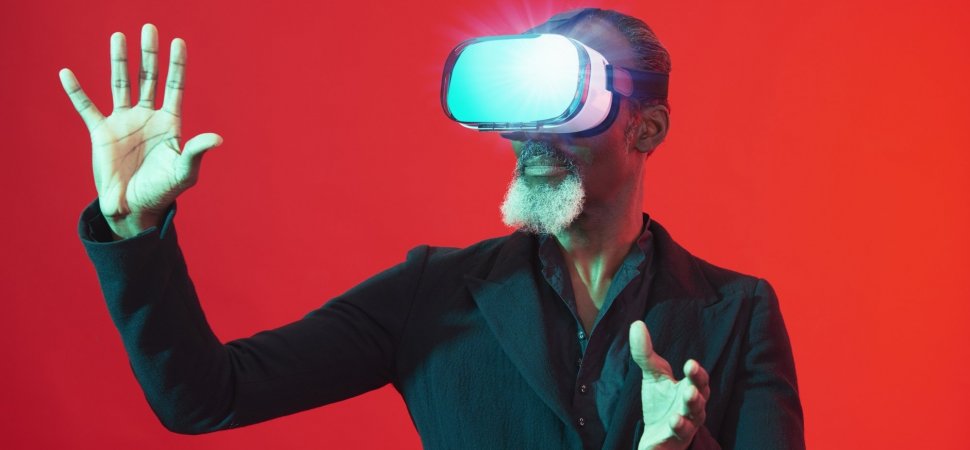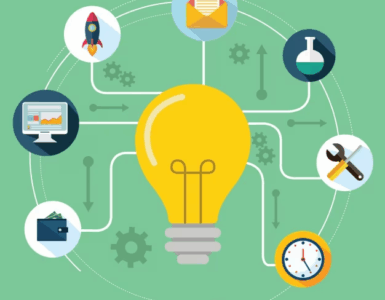 The next wave of billion-dollar business ideas–the new Googles, Netflixes, and Amazons–will emerge in the next two to three years.
The next wave of billion-dollar business ideas–the new Googles, Netflixes, and Amazons–will emerge in the next two to three years.
That’s according to technology forecaster and strategist Daniel Burrus, CEO of Burrus Research.
“Two to three years is fast,” says Burrus. “This is a gigantic opportunity. This is an entrepreneur’s dream.”
What will spark this new burst of entrepreneurial activity? A new generation of mobile technology, known as 5G–just as the current tech giants were born of the current version of the internet.
Yes, the new technology will afford bigger, faster pipes for data. But the larger impact is vastly improved quality, timeliness, and usefulness of that data.
How can you find these billion-dollar business ideas? Burrus and other top futurists suggest that you ask these five questions and explore your answers.
Contents
1. What can people do together, virtually?
Interacting in real time will be even easier with 5G’s faster speeds. Many of the more interesting new applications being dreamed up leverage the new networks’ low latency–a term describing delays in data transfer.
For example, if your garage band wanted to jam together online, it’d be a bit frustrating on most current networks. There’d be a barely perceptible, but still irritating, lag between when your bandmate plays a note and when you hear it. That’s not a good way to rehearse. 5G will solve that problem and also open the door to other experiences that groups of people can participate in simultaneously and virtually, says Burrus.
Sports is one promising area. The huge virtual raven that appeared in a December 12 Baltimore Ravens game television broadcast, and on jumbotrons in the stadium, is one example of the kind of quirky new applications that are expected to emerge in the new year, says Brian Solis, an independent digital analyst based in Redwood City, California. “The new killer apps will build upon that,” he says, mixing elements of virtual and augmented reality in what’s known as mixed reality.
2. What needs to be connected?
5G has the capability to transform the internet of things into the internet of everything. How? The internet of things is about to get a major upgrade. Think about car makers partnering with one another so that all automobiles are connected, feeding a grid of networks that inform the cars about accidents, weather, and road conditions. Right now, it takes too much time to send that information from a car to a network and back out to another car. 5G will make this sort of connectivity possible. “There are possibilities no one has imagined,” says Solis.
3. Where are the surer bets?
Any new technology has its share of unknowns. Clearly delineating certainty from uncertainty nearly always results in a better strategy. So, start by checking what’s a real trend versus what’s just an assumption, says Burrus.
The 5G rollout is happening, says Burrus, so that’s a definite. Less certain is the expectation that 5G will take a long time to reach rural users. It’s important to differentiate between such “hard” (certain) and “soft” (assumed and less certain) trends, according to Burrus. Otherwise, he says, you may miss opportunities by mistaking assumptions for facts.
“The opportunity with a soft trend is that we can change it,” says Burrus. And as an entrepreneur, you can have a role to play in doing so.
4. What is confusing?
Technology that leverages 5G can help users better understand the physical world.
By combining 5G technology with advances in visual search, augmented reality will give people the ability to identify most anything in their world, says Mike Liebhold, a senior researcher and distinguished fellow at Institute for the Future, a nonprofit think tank.
The trick to making augmented reality helpful and seamless–as opposed to glitchy and irritating–will lie in providing information about an environment as needed, with technology that is nearly invisible. The implications are especially clear for industries such as tourism. You could walk around a city as a tourist, for example, and an app running in the background could provide your own virtual guide.
Apple’s forthcoming virtual reality glasses will make a big difference in the development of this new technology and its applications, Liebhold predicts. “It’s going to be a big shift,” he says.
While Apple, he says, “is not the first company to do a lot of things, when they do it, they do it right.” The headset, he says, is expected to be priced for the mass market and help drive the adoption of 5G networks. He expects it to be released by mid-2021.
5. How can you create a better customer experience?
The potential for a better customer experience often spurs the adoption of new technologies. And it’s often what spurs companies to invest, Solis says. In the case of 5G, he says, many customer experiences will improve by using the new technology to do the same tasks, only a bit better and faster. Building innovation on top of that can create new value. The combination leads to disruption, says Solis, “and that’s going to happen really quickly.”
Most immediately, he says, companies are going to prioritize mobile data to improve their ability to personalize their products and services, both online and in person. That might mean better chatbots, a more-informed customer service rep, or the use of artificial intelligence to anticipate what a customer’s needs might be.
“Once you as a consumer see what real-time personalization looks like,” says Solis, “it’s something you want.”
[“source=inc”]























































